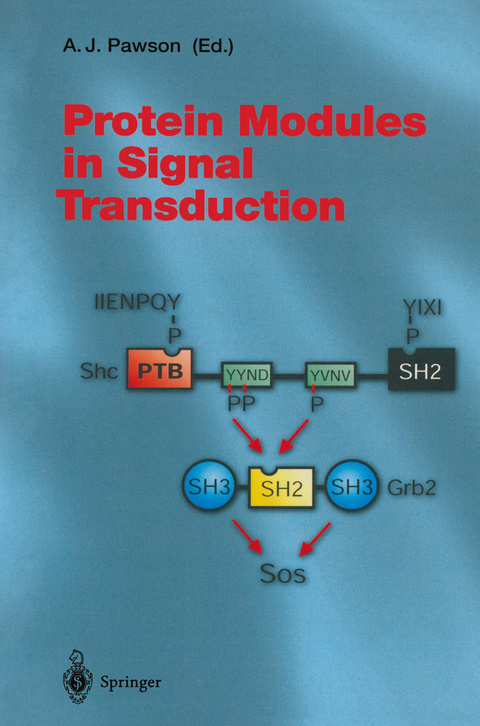
Protein Modules in Signal Transduction
Springer Berlin (Verlag)
978-3-642-80483-0 (ISBN)
List of Contents.- Functions of SH2 and SH3 Domains.- Function of PTB Domains.- Pleckstrin Homology Domains.- Structure and Function of LIM Domains.- WW (WWP) Domains: From Structure to Function.- Modular Domains of Focal Adhesion-Associated Proteins.- Physiological Function of Receptor-SH2 Interactions.- The IRS-Signaling System: A Network of Docking Proteins That Mediate Insulin and Cytokine Action.- PDZ Domains and the Formation of Protein Networks at the Plasma Membrane.- Mechanism and Function of Signaling by the TGFß Superfamily.- Notch Receptors, Partners and Regulators: From Conserved Domains to Powerful Functions.- Signaling Through Grb2/Ash-Control of the Ras Pathway and Cytoskeleton.- Genetic Analysis of Sevenless Tyrosine Kinase Signaling in Drosophila.
| Erscheint lt. Verlag | 14.12.2011 |
|---|---|
| Reihe/Serie | Current Topics in Microbiology and Immunology |
| Zusatzinfo | IX, 368 p. |
| Verlagsort | Berlin |
| Sprache | englisch |
| Maße | 155 x 235 mm |
| Gewicht | 580 g |
| Themenwelt | Medizin / Pharmazie |
| Naturwissenschaften ► Biologie ► Biochemie | |
| Naturwissenschaften ► Biologie ► Mikrobiologie / Immunologie | |
| Naturwissenschaften ► Biologie ► Zellbiologie | |
| Schlagworte | Activation • Cell • Cytokine • Cytoplasm • Cytoskeleton • Drosophila • Eiweisse • Membrane • Protein • protein modules • protein-protein interactions • proteins • receptor • Signal • signal transduction |
| ISBN-10 | 3-642-80483-7 / 3642804837 |
| ISBN-13 | 978-3-642-80483-0 / 9783642804830 |
| Zustand | Neuware |
| Haben Sie eine Frage zum Produkt? |
aus dem Bereich


